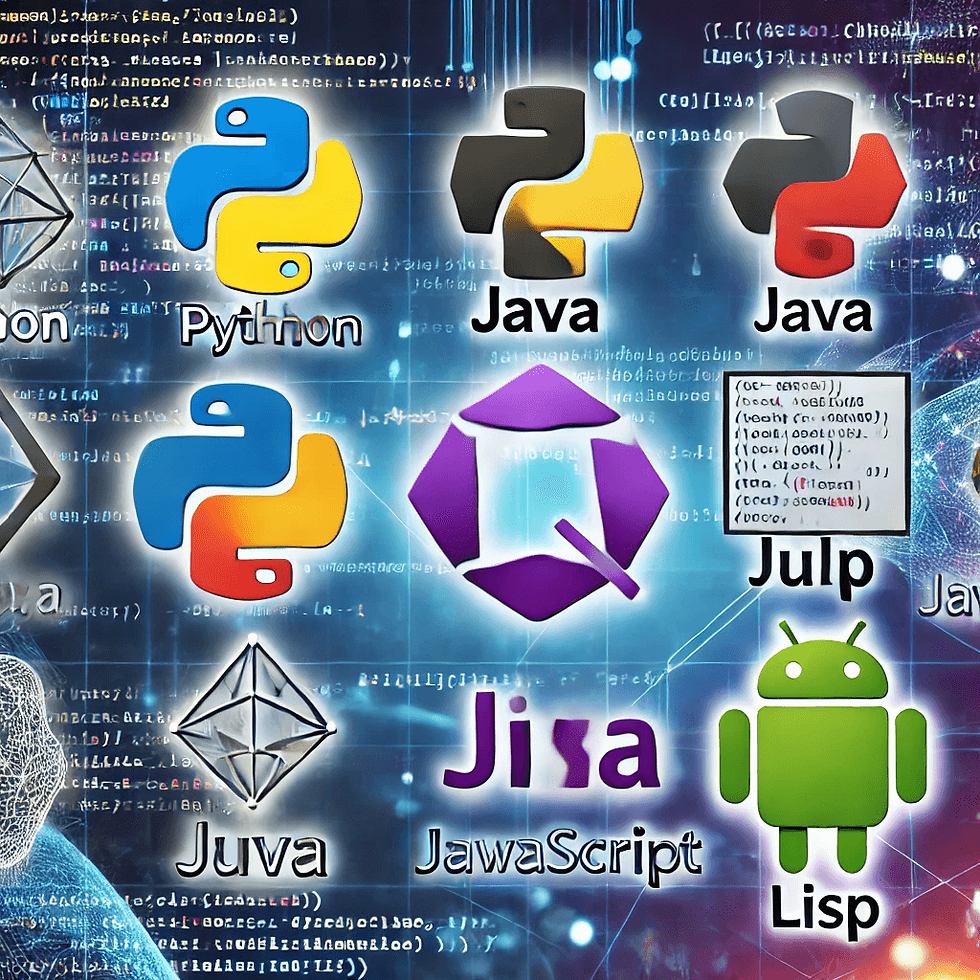Leading Programming Languages for AI Development
- helen029
- Jul 24, 2024
- 2 min read

Artificial Intelligence (AI) is revolutionizing industries by offering intelligent solutions to complex problems. To develop successful AI applications, choosing the best ai programming language is crucial. Here, we highlight some of the leading languages that can support your AI projects.
Python: The AI Development Leader
Python is the most widely used language in AI, known for its simplicity and powerful libraries. Tools like TensorFlow, Keras, and PyTorch make machine learning and deep learning accessible, allowing developers to focus on building effective models. Python’s readable syntax and comprehensive documentation enhance its appeal.
R: Mastering Data Science
R is a preferred language for data scientists, offering robust capabilities for statistical analysis and visualization. Packages like caret and ggplot2 facilitate machine learning and data manipulation. R’s ability to efficiently handle large datasets makes it a vital tool in AI development.
Java: Reliable and Scalable
Java’s strengths include scalability, portability, and robust performance, making it suitable for large-scale AI applications. Libraries such as Deeplearning4j and Weka provide essential tools for developing AI models, ensuring Java remains a key player in the AI field.
C++: Optimal Performance
C++ is preferred for performance-intensive AI applications due to its speed and efficiency. It is ideal for real-time processing and complex computations, commonly used in robotics, computer vision, and AI algorithm development, where high performance is crucial.
JavaScript: AI for the Web
JavaScript, traditionally associated with web development, is making significant advances in AI with frameworks like TensorFlow.js and Brain.js. These tools enable the development and deployment of AI models directly in web browsers, broadening AI’s reach. JavaScript’s widespread use and growing ecosystem make it an attractive option for web-based AI projects.
Julia: Speed and Simplicity
Julia is gaining popularity in the AI community for its high-performance capabilities in numerical computing. It combines the speed of C++ with the simplicity of Python, making it well-suited for AI development. Libraries like Flux.jl and Knet.jl offer robust tools for machine learning, positioning Julia as a rising star in the AI landscape.
LISP: The AI Innovator
LISP has a long history in AI, known for its capabilities in symbolic reasoning and knowledge representation. Despite being less popular today, LISP’s features like rapid prototyping and dynamic object creation continue to influence modern AI research and development.
Prolog: Logic-Based AI
Prolog excels in tasks requiring symbolic reasoning and logic programming, such as natural language processing and expert systems. Its declarative nature allows developers to define relationships and rules clearly, making it a valuable tool for specific AI applications.
In summary, the choice of programming language for AI development depends on the specific needs of your project. Python’s versatility, R’s data analysis strengths, and Java’s reliability each offer unique advantages. By leveraging these languages, developers can create innovative AI solutions that address complex challenges and drive technological progress.




Comments